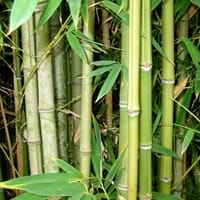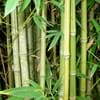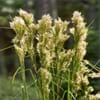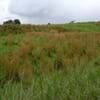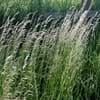Life Span
Perennial
Perennial
Origin
China, Japan
Africa, South-Eastern Asia
Types
Greenstripe Vivax, Moso, Weavers Bamboo, Oldhamii
Not Available
Number of Varieties
Not Available
Habitat
Warmer regions
Subtropical forests, Tropical regions
USDA Hardiness Zone
6-9
5-9
AHS Heat Zone
Not Available
9 - 5
Sunset Zone
Not Available
1a, 1b, 2a, 2b, 3a, 3b, 7, 8, 9, 10, 11, 14, 18, 19, 20, 21
Habit
Clump-Forming
Clump-Forming
Minimum Width
Not Available
Flower Color
Not Available
Pale Yellow, Yellow green
Flower Color Modifier
Not Available
Bicolor
Fruit Color
Green, Pink, Red
Green, Light Green
Leaf Color in Spring
Dark Green
Green
Leaf Color in Summer
Dark Green
Light Green
Leaf Color in Fall
Dark Green
Green, Light Green
Leaf Color in Winter
Dark Green
Brown, Light Yellow, Tan
Leaf Shape
Long Linear
Oval
Plant Season
Not Available
Summer, Fall, Winter
Sunlight
Full Sun, Partial Sun, Partial shade
Full Sun
Growth Rate
Very Fast
Medium
Type of Soil
Loam
Clay, Loam, Sand
The pH of Soil
Acidic, Neutral, Alkaline
Acidic, Neutral, Alkaline
Soil Drainage
Average
Average
Bloom Time
Not Available
Summer, Late Summer, Early Fall
Tolerances
Wet Site, Drought
Pollution, Drought, Salt
Where to Plant?
Container, Ground
Ground
How to Plant?
Grafting, Seedlings, Stem Planting, Transplanting
Seedlings, Stem Cutting
Plant Maintenance
Medium
Medium
Watering Requirements
Needs watering once a week, Use Mulches to help prevent water loss during hot and windy weather, Water Deeply
Needs less watering
In Summer
Lots of watering
Lots of watering
In Spring
Moderate
Moderate
In Winter
Average Water
Average Water
Soil pH
Acidic, Neutral, Alkaline
Acidic, Neutral, Alkaline
Soil Type
Loam
Clay, Loam, Sand
Soil Drainage Capacity
Average
Average
Sun Exposure
Full Sun, Partial Sun, Partial shade
Full Sun
Pruning
Do not prune during shooting season, Prune in late summer or fall, Remove damaged leaves
A hard prune may be necessary if the plant becomes woody, Cut upper 1/3 section when young to enhancegrowth, Remove damaged leaves, Remove dead branches, Remove dead leaves
Fertilizers
All-Purpose Liquid Fertilizer
10-10-10 diluted liquid fertilizer, All-Purpose Liquid Fertilizer, Compost
Pests and Diseases
Black sooty mold, Mealybugs, Mosaic viruses, Powdery mildew, pythogens, Stem rot
Aphids, Downy mildew, Purple Blotch, Red blotch
Plant Tolerance
Drought
Drought, Salt and Soil Compaction, Shade areas
Flower Petal Number
Not Available
Single
Foliage Texture
Coarse
Fine
Foliage Sheen
Matte
Glossy
Attracts
Not Available
Bees, Flies, pollinators
Allergy
Cyanide poisoning
conjunctivitis, sneezing
Aesthetic Uses
Showy Purposes
Not Available
Beauty Benefits
Not Available
Making cosmetics, Not Available
Environmental Uses
Air purification
Air purification, Shadow Tree, Soil protection
Medicinal Uses
Clears heat, Cold, fidgeting, Treating fever, Urinary tract problems
Cardiovascular problems, Detoxifies lever, Diabetes, Dysentry, Jaundice, Menstrual Disorders
Part of Plant Used
Leaves, Stem
Inner Bark, Leaf Stalks
Other Uses
Application in Handicrafts, Showy Purposes, Used As Food, Used in Furniture, Used in paper industry
Can be made into a herbal tea, Oil is used for aromatherapy, Used as a fodder tree in agricultural areas
Used As Indoor Plant
Yes
No
Used As Outdoor Plant
Yes
Yes
Garden Design
Hedges, Mixed Border
Dried Flower/Everlasting, Lawns and Turf, Mixed Border, Wildflower
Botanical Name
BAMBUSA
Terminalia arjuna
Common Name
Bamboo, Clumping Bamboo
Arjuna
In Hindi
Bānsa
अर्जुन वृक्ष
In German
Bambus
Terminalia arjuna
In French
Bambou
Terminalia arjuna
In Spanish
Bambú
Migdałecznik arjuna
In Portuguese
bambu
Migdałecznik arjuna
In Polish
Bambus
Migdałecznik arjuna
Phylum
Magnoliophyta
Magnoliophyta
Class
Liliopsida
Not Available
Genus
Acidosasa
Terminilia
Clade
Not Available
Angiosperms, Eudicots, Rosids
Tribe
Bambuseae
Not Available
Subfamily
Arthrostylidiinae, Arundinariinae, Bambusinae, Chusqueinae, Guaduinae, Melocanninae, Nastinae, Racemobambodinae, Shibataeinae
Not Available
Importance of Bamboo and Arjuna Tree
Want to have the most appropriate plant for your garden? You might want to know the importance of Bamboo and Arjuna Tree. Basically, these two plants vary in many aspects. Compare Bamboo and Arjuna Tree as they differ in many characteristics such as their life, care, benefits, facts, etc. Every gardener must at least have the slightest clue about the plants he wants to plant in his garden. Compare their benefits, which differ in many ways like facts and uses. The medicinal use of Bamboo is Clears heat, Cold, fidgeting, Treating fever and Urinary tract problems whereas of Arjuna Tree is Cardiovascular problems, Detoxifies lever, Diabetes, Dysentry, Jaundice and Menstrual Disorders. Bamboo has beauty benefits as follows: Not Available while Arjuna Tree has beauty benefits as follows: Not Available.
Compare Facts of Bamboo vs Arjuna Tree
How to choose the best garden plant for your garden depending upon its facts? Here garden plant comparison will help you to solve this query. Compare the facts of Bamboo vs Arjuna Tree and know which one to choose. As garden plants have benefits and other uses, allergy is also a major drawback of plants for some people. Allergic reactions of Bamboo are Cyanide poisoning whereas of Arjuna Tree have conjunctivitis and sneezing respectively. Having a fruit bearing plant in your garden can be a plus point of your garden. Bamboo has no showy fruits and Arjuna Tree has showy fruits. Also Bamboo is not flowering and Arjuna Tree is not flowering . You can compare Bamboo and Arjuna Tree facts and facts of other plants too.
